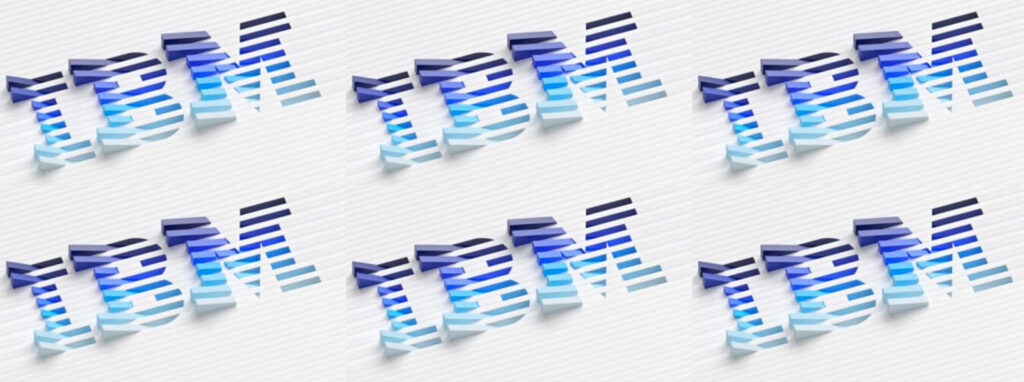IBM’s second-quarter 2024 revenue rose 2% year over year to $15.8 billion, beating Wall Street expectations, as its hybrid cloud and AI strategy helped the company boost software sales by 7% and profits rose 16% to $1.83 billion.
Software revenue was $6.74 billion, consulting revenue was down 0.9% to $5.2 billion, small infrastructure revenue was $3.65 billion, up 0.7% from a year ago, and financing revenue was $169 million, down 8.3% from a year ago.
The software and infrastructure sector shows a pronounced seasonal pattern, with a notable peak in the fourth quarter.
CEO Arvind Krishna said in prepared remarks, “We delivered a strong quarter, beating expectations with solid revenue growth, profitability and cash flow generation. Software and infrastructure performed above model, with investments in innovation driving organic growth, while Consulting underperformed. Our performance highlights the continued success of our hybrid cloud and AI strategy and the strength of our diversified businesses.”
“Technology spending remains strong as it continues to serve as a key competitive advantage enabling companies to scale, become more efficient and drive growth. As we noted last quarter, factors such as interest rates and inflation impacted the timing of decisions and discretionary spending in consulting. Overall, we believe the macro outlook for technology spending is favorable, but we are aware of this impact.”
Financial Overview
Gross margin: 57.8%, up 190 basis points year-over-year Operating cash flow: $2.1 billion, down $600 million year-over-year Free cash flow: $2.6 billion, up $500 million (24%) year-over-year Cash, restricted cash and marketable securities: $16 billion, up $2.5 billion from the end of 2023 Debt: $56.5 billion, flat year-over-year EPS: $1.96
IBM is infusing AI across its business, and Krishna said: “In software, we are using AI in our broad suite of automation products such as Apptio and watsonx Orchestrate, and will do the same with HashiCorp once the acquisition is complete. Red Hat is bringing AI to OpenShift AI and RHEL AI. In transaction processing, watsonx Code Assistant for Z is rapidly gaining adoption. In infrastructure, IBM Z is bringing real-time AI inference capabilities. In consulting, our experts are helping clients design and implement their AI strategies.”
The firm’s hybrid cloud sector is now also AI-centric: “Hybrid cloud remains a top priority for clients as flexibility in deploying AI models across multiple environments and data sovereignty remain key focuses.”
Generative AI is experiencing rapid growth, the industry claims: “Our business volume related to generative AI has exceeded $2 billion to date, with roughly one-quarter being software and three-quarters being consulting engagements.”
Interest in GenAI’s customer base is driving IBM’s compute (z16 mainframe) and storage businesses: “The Telum processor in z16 is a unique differentiator, driving real-time, inline AI inference at unprecedented speed and scale for applications such as real-time fraud detection. Our storage products are also benefiting from generative AI as clients address data preparation and require fast access to large volumes of unstructured data.”
Using percentages at constant exchange rates, SVP and CFO Jim Kavanagh said: “Software grew 8%, with solid growth in Hybrid Platforms & Solutions and Transaction Processing, and strong transaction performance. Infrastructure performed strongly, up 3%, with growth across IBM Z and distributed infrastructure. Consulting increased 2% and continued to be impacted by lower discretionary spending.”
“Transaction processing delivered 13% revenue growth. This performance demonstrates the innovation and value of our mission-critical hardware stack across IBM Z, Power and storage.”
Tracking IBM’s quarterly revenues shows a decline from 2020 but signs of growth from Q3 2023 onwards
The Infrastructure business segment is divided into the Hybrid Infrastructure segment and the Infrastructure Support (hardware and software) business. Hybrid Infrastructure is further divided into the Z Mainframe and OS business and Distributed Infrastructure (Power server hardware and OS, storage hardware, IBM Cloud IaaS, OEM asset recovery services).
Hybrid infrastructure revenue was $2.4 billion for the quarter, while infrastructure support revenue was $1.3 billion.
On hybrids, Cavanaugh said, “IBM Z revenues increased 8% this quarter. More than two years into the z16 cycle, revenue performance continues to outperform prior cycles. Increased workloads are translating into increased Z capacity or MIPS, which has increased roughly threefold over the past few cycles.”
“In Distributed Infrastructure, revenues increased 5% driven by strength in both Power and storage. Power growth was driven by demand for data-intensive workloads on Power 10, led by SAP Hana. Storage also saw growth this quarter, including growth in high-end storage aligned with the z16 cycle, and customized solutions to protect, manage and access data for the expansion of generative AI.”
As is usual with IBM results, we don’t have revenue figures for storage hardware and OS, nor do we have revenue for storage software, which includes Storage Scale, Ceph, Data Protection etc, and is included in IBM’s Software division revenue figures.
Cavanaugh summed up the quarter saying, “We are pleased with our quarterly and first half performance and are confident in our updated guidance. We expect to deliver revenue growth, operating margin expansion and free cash flow expansion for the full year.”
“Given our performance in the first half, we are now raising our full-year free cash flow outlook to more than $12 billion,” Krishna said. The company’s previous full-year free cash flow outlook was about $12 billion.
Bootnote
IBM focuses on FCF, which is the cash remaining after paying for business operations and maintaining capital assets. FCF funds dividends, debt payments, reinvestment in IBM’s business, and acquisitions. Investors and analysts sometimes prefer FCF as an indicator of business health over earnings (net income) because it can be a more accurate indicator of financial health.

